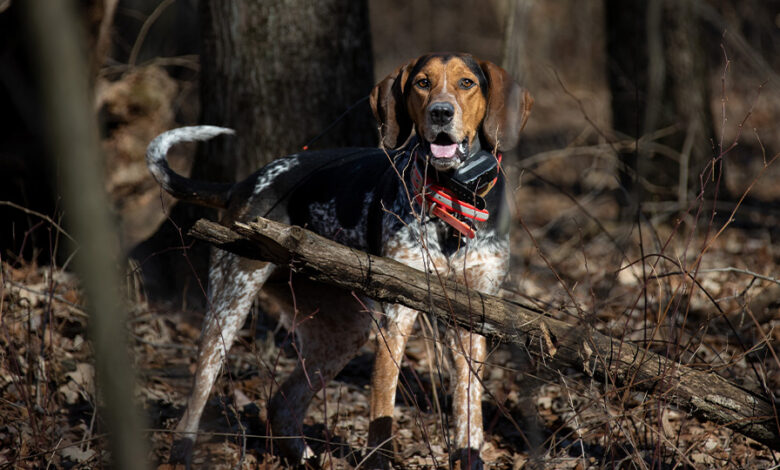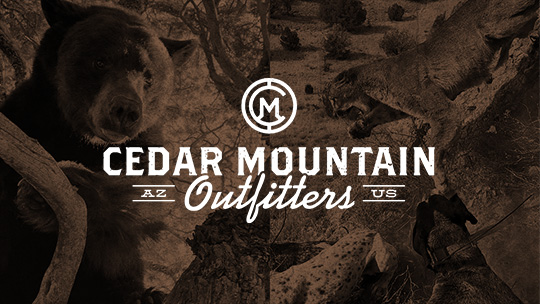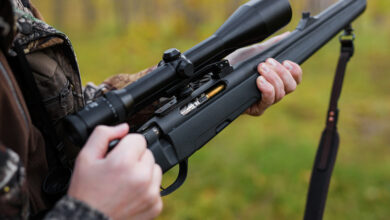Hunting with Hounds: Preserving a Time-Honored Legacy

There’s nothing quite like the music of a hound echoing through the hills. For generations, houndsmen and women have relied on their four-legged partners to track elusive game like bears, mountain lions, raccoons, and bobcats. Hunting with hounds is one of the oldest forms of pursuing wild game in North America—and it’s more than just a hunt; it’s a tradition, a lifestyle, and a legacy that demands dedication, patience, and deep respect for both the animal and the wild.
What Is Hound Hunting?
Hound hunting involves training scent or sight hounds to pursue game until the quarry is either treed (climbs a tree for safety) or bayed (cornered and held by the dogs without being touched). This allows the handler to move in quickly, thanks to modern GPS tracking collars like the Garmin Alpha 300i, which provide real-time updates on each dog’s location and status.
This technology ensures that the handler can reach the animal quickly to either release it unharmed or make an ethical harvest. The fast response time greatly reduces stress on the animal, making this one of the most controlled and humane hunting methods available.
One of the greatest advantages of hound hunting is that it gives hunters an up-close opportunity to evaluate the animal before making a decision. From just a few yards away, the hunter can assess the age, gender, and condition of the bear or lion. In contrast, spot-and-stalk hunting often involves long-distance shots where it’s easy to mistake young animals or females for larger males, leading to accidental harvests that may negatively impact predator populations.
In short, hound hunting provides a more selective and sustainable approach, allowing the hunter to make well-informed decisions while minimizing unnecessary harm or stress to the animal.
The Hounds Behind the Hunt
There are several breeds used in hound hunting, each with their unique traits:
- Treeing Walker Coonhound – Known for their speed, stamina, and strong treeing instinct. These dogs are versatile and popular across many states.
- Bluetick Coonhound – These cold-nosed hounds have an impressive ability to follow older scent trails and are often used in bear and lion hunts.
- Plott Hound – North Carolina’s state dog, these gritty and athletic hounds are built for big game like bear and boar.
- Redbone Coonhound – Famous for their loud, musical voice and even temper, they make excellent multi-purpose hunting dogs.
- Black and Tan Coonhound – A classic breed with a strong nose and deliberate tracking style, often used in colder or rugged climates.
Training Hounds: It’s All About Consistency
Training a hound starts early. Most houndsmen begin working pups on scent drags, caged game (legally sourced), and short chase scenarios. The goal? Build confidence, develop voice recognition, and reward the dog’s natural tracking instincts.
Tools of the trade are essential for success:
- Garmin Alpha 300i Dog Tracking and Training Bundle: This system is a favorite among serious houndsmen for its real-time tracking, long-range capabilities, and built-in training features.
- Everlit Pet First Aid Kit: Whether you’re running dogs in rocky desert country or dense forests, accidents happen. A good canine first aid kit is non-negotiable.
- Mighty Paw Hands-Free Dog Leash: Great for handling dogs at the trailhead or around camp.
- GULPY Water Dispenser for Dogs: Dogs can run for miles on a scent trail. Keep them hydrated with a field-ready dispenser like the GULPY.
- Petmate Ruffmaxx Dog Kennel: A durable, airline-approved crate that keeps your hounds safe during transport or at camp.
Where Hound Hunting Thrives
Hound hunting is legal and thriving in several U.S. states. Some of the most popular regions include:
- Arizona – Known for lion and bear hunting, with vast public lands and permissive regulations.
- Utah – Offers great opportunities for both mountain lion and bear hunting with hounds.
- North Carolina and Tennessee – Rich traditions of coon hunting and bear hounding in the Appalachian Mountains.
- Idaho and Montana – Known for rugged terrain and populations of predators like wolves, lions, and black bears.
- West Virginia and Kentucky – Historic strongholds for houndsmen with an emphasis on raccoon and bobcat hunting.
Houndsmen: Stewards of the Land
Houndsmen are often some of the most knowledgeable outdoorsmen you’ll meet. They’re conservationists, land stewards, and wildlife managers who spend more time in the woods than most. They understand animal behavior on a deep level and play a vital role in population control and predator management—especially in areas where predators like mountain lions or bears threaten livestock or mule deer populations.
Keeping the Legacy Alive
In a modern world, it’s critical that we preserve traditional forms of hunting, especially those that rely on centuries-old skills and close partnerships with animals. Teaching younger generations about hound hunting and sharing the field with new dog handlers is how we keep this incredible way of life alive.
Ready to Experience It?
If you’ve ever dreamed of hunting bears or mountain lions behind a pack of hard-charging hounds, Cedar Mountain Outfitters offers fully guided hunts in Arizona. These hunts give you a front-row seat to the action, with experienced guides and well-trained hounds doing what they do best.
Now booking discounted packages for 2025 and 2026!

www.CedarMountainOutfitters.com
Don’t miss your chance to be part of this unforgettable experience. Spots are limited.
Final Thoughts
Hunting with hounds isn’t just a sport—it’s an art form that takes years to master and a lifetime to perfect. The bond between dog and handler, the chase, the terrain, and the heritage—it’s all part of something bigger than just a hunt. It’s a tradition worth preserving.
Affiliate Disclaimer: This article contains affiliate links to products on Amazon. CarbonTV may earn a commission if you make a purchase through these links, at no additional cost to you.
Interested in Filming your Hunts? Check out our Article: 7 Must-Have Field Production Tools for Outdoor Filming


